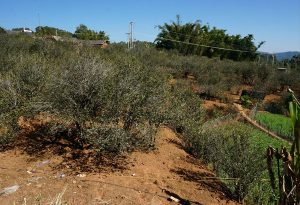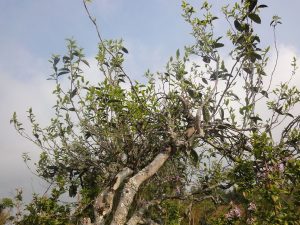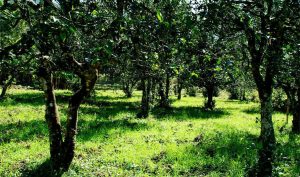
Wenshanding Tea Plantation in Jinggu County, Puer

Chinese Name:景谷县文山顶茶区
English Name: Wenshanding Tea Plantation in Jinggu County, Puer
Chinese Pinying: Jinggu Wen Shan Ding Cha Qu
Keywords: Wenshanding Tea Plantation, Puer Tea, Ancient tea tree
Location: Located in Wenshanding, Jinggu County, Puer
Admission Fee: Free
Opening hours: All day
Best Time To Visit: All year
About Wenshanding Tea Plantation
Located in Jinggu County, Wenshan Village, Wenshanding Tea Plantation is mainly distributed in the vicinity of Dashi Temple in the village. It’s the ancient tea garden with high quality in Xiaojinggu tea area(小景谷茶区). Wenshanding Tea Plantation belongs to Xiaojinggu tea area which is located in the north of Jinggu County, 41 kilometers away from the county. It borders with Zhentai Township of Zhenyuan County. It has a subtropical highland monsoon climate with the forest coverage rate of the entire county of 76.4%. The annual precipitation is 1200-1400 mm while the annual average temperature is 20 ℃.
About the Tea in Jinggu County

Jinggu County is located in the southwest of Mt. Wuliang, Hengduan Mountains. It is one of the counties that distribute many Yunnan old tea trees. It is also one of the oldest tea growing regions in Yunnan. In 1078 China’s only Magnolia fossils were found in Mangxian County, Jinggu. The Magnolia fossils which have the history over 3540 year is accepted as the father of the modern tea tree.
The ancient tea tree garden covers an area of 65 million square meters; including 20million square meters old tea garden which has the history of one hundred years and 0.4million square meters old tea garden with 50-100 years’ history. What’s more, there are 41.4million square meters wild tea. They are mainly distributed in Huangjiaba(黄家坝), Sujiashan(苏家山), Nanguanshan(南光山), Wenshan(文山)and other places, among which Xiaojinggu(小景谷) owns the ancient tea garden with the longest history and the relatively best quality.
The ancient tea garden distributes almost in every village in Xiaojinggu. The most representative and famous of them are the two ancient tea garden areas Kuzhushan(苦竹山)and Wenshanding(文山顶). The old arbor trees in the tea area have the features of fat buds, long line, well-tomentum, bitter taste with little sweet, great after-taste and graceful flavor.
What are features in Jinggu Tea

First, the number is large and the distribution is wide. The Wentang, Wenxing, Wenshan, Wenlian, Wenzhao, Yingpan villages and most of the natural villages in Jinggu Township have ancient tea gardens distributed. The ancient tea gardens are planted in pieces, with high density and high yield.
Second, the ecological situation is good. The Xiaojinggu tea area has not undergone a large-scale tea garden transformation. The ancient tree tea is basically grown naturally by trees, and has not been dwarfed.
Third, the tree is older. Xiaojinggu has a history of various teas earlier, but the largest amount of existing tea should be formed after the promotion of planting in the Qing Dynasty (the Qing Dynasty official residence). Many of these ancient tree teas are large trees with a diameter of more than 10 cm.
Fourth, the tea is better. Affected by natural conditions, tree age and ecological status, the Xiaojinggu tea area is more fragrant, with long lines and velvet hair. The tea soup is bitter and sweet, the bitterness is obvious, the bottom of the cup is fragrant, and the mountain is good.
Fifthly, there is almost no problem of using tea from the terraced tea to mix old (old to big) tea on the tea mountain. There are also some terraced tea plants on the tea mountain, but all the white tea is planted. The purchase price of the large white tea per kilogram is higher than that of the old one. Old change into large) tree tea is high, so do not use large white tea (Taiwan tea) to mix old tree tea.
How to Get to Wenshanding
Firstly, you should get in Jinggu County.
1. By Air
The Jinggu General Airport Construction Project was officially launched on November 24, 2017. The project is the national A1 general airport construction project of the 13th Five-Year Plan of Yunnan Province, the “Wuwang” construction project of Yunnan Province. The airport is located in the west of Jinggu County, 7.5 kilometers away from the seat of Jinggu County.
2. By Train
Pu’er Railway Station is the middle station of the Yumo Railway under construction and an important station for the Laos section of the Trans-Asian Railway. It is expected to be put into use by 2020.
3. By Long-distance Bus
There is the Passenger Station in Jinggu County for people to get in.
Jinggu– Wenshanding
Take the taxi or rent a car to go to the Wenshanding.
Where to Stay in Jinggu County
Jinggu County is a county under the jurisdiction of Pu’er City, Yunnan Province, China. There are many hotels around Jinggu County. Yunnan Exploration will provide the best hotels for you. The recommended hotels as follows:
1. Jinggu Weiyuanjiang International Hotel(景谷威远江国际大酒店)
Add: No.18 of Eastern Binghe Road, Jinggu County(景谷县滨河东路18号)
Tel: 0879-8886666
2. Haitian Hotel(海天酒店)
Add: No.23 of Wenming Road, Jinggu County(景谷县文明路23号)
Tel: 0879-5111666
3. Weijiangyuan Hotel(威江园酒店)
Add: No.88 of Mangxiang Avenue, Jinggu County(景谷县芒乡大道88号)
Tel: 0879-5111757
Best Time to Visit

It is suitable to visit Jinggu County all year round. Like many other cities in Yunnan, Jinggu is a place where the seasons are like spring. There is no cold, no heat, warm and humid, especially suitable for human habitation, so you can go to Jinggu at any time.
Recommended Tour
When you traveling Pu’er, Jinggu County is a good place to be put on your list. It can be joined in whatever your Pu’er tour or Yunnan Tour.
11 Days Yunnan Ancient Tea-Horse Road Tour with Puer and XishuangBanna Tea Culture Exploration
14 Days Southwest Yunnan Tea Culture Tour from Xishuangbanna to Puer and Lincang
Travel Tips
1.There are many ethnic minorities living here, such as Lahu, Hani, Wa and Yi. Varied customs make it a colorful city. Eating habits, ceremonies, costumes and folk legends can all be a strong attraction for people who are visiting. In addition, the city is the hometown of the well known Puer Tea, and the local people have diversified ways of handling tea, such as bamboo tube tea, cold tea dish, earth-pot tea and baked tea; all of which you should try.
2.Enjoying a plateau monsoon climate at low latitude, the region is affected by the Indian Ocean and the Bay of Bengal. Therefore, the main features of its weather are mildness and humidity without strong winds.
3.Special Local Products: Puer Tea, bamboo shoot, edible fungi, purple rice, mango.

 7 Days GolfingTour
7 Days GolfingTour
 8 Days Group Tour
8 Days Group Tour
 8 Days Yunnan Tour
8 Days Yunnan Tour
 7 Days Shangri La Hiking
7 Days Shangri La Hiking
 11 Days Yunnan Tour
11 Days Yunnan Tour
 6 Days Yuanyang Terraces
6 Days Yuanyang Terraces
 11 Days Yunnan Tour
11 Days Yunnan Tour
 8 Days South Yunnan
8 Days South Yunnan
 7 Days Tea Tour
7 Days Tea Tour
 8 Days Muslim Tour
8 Days Muslim Tour
 12 Days Self-Driving
12 Days Self-Driving
 4 Days Haba Climbing
4 Days Haba Climbing
 Tiger Leaping Gorge
Tiger Leaping Gorge
 Stone Forest
Stone Forest
 Yunnan-Tibet
Yunnan-Tibet
 Hani Rice Terraces
Hani Rice Terraces
 Kunming
Kunming
 Lijiang
Lijiang
 Shangri-la
Shangri-la
 Dali
Dali
 XishuangBanna
XishuangBanna
 Honghe
Honghe
 Kunming
Kunming
 Lijiang
Lijiang
 Shangri-la
Shangri-la
 Yuanyang Rice Terraces
Yuanyang Rice Terraces
 Nujiang
Nujiang
 XishuangBanna
XishuangBanna
 Spring City Golf
Spring City Golf
 Snow Mountain Golf
Snow Mountain Golf
 Stone Mountain Golf
Stone Mountain Golf

















